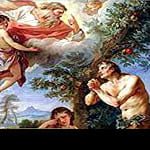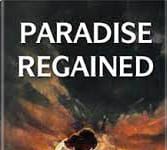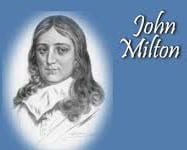The Art of Characterisation in Chaucer’s Canterbury Tales
Or
Use of Irony and Humour in The Canterbury Tales
–Menonim Menonimus
The Art of Characterisation in Chaucer’s ‘Canterbury Tales’
The Art of Characterisation in Chaucer’s ‘Canterbury Tales’
Geoffrey Chaucer (1340-1400) is a great master of characterization. His characterization is realistic (life-like), discriminating (detail), ironic (humorous) and exhaustive (all-inclusive). All classes of people or people of almost all professions have gone under the purview of his characterization. He is so keen an observer that he has portrayed all his characters both as types and individuals. Let us illustrate Chaucer’s art of characterization with special reference to his Canterbury Tales as below.
Knight
First, we can take the Knight, one of his secular characters, into our consideration. Evidently, Chaucer presents his Knight as a real representative (type) of his class. During those days, the Knights were required to be wise, provident, just and pure. They were expected to serve Christianity against the infidels and the barbarians. They were to be the protector and exemplars of moral virtue. There is no doubt that Chaucer’s Knight fulfills all these types of conditions. The poet says:
‘He was a verray parfit gentil knight.’
At the same time, this Knight possesses certain individual characteristics as- he never wore gaudy garments but gypon (doublet) of coarse clothes.
Prioress
Secondly, Prioress, one of the ecclesiastical characters, is portrayed both as a type and as an individual. She is a type as- she was well-bred, she could speak French fluently, she was charitable, full of pity and she acquired excellent table manners. But she has also individualized as- she bears a romantic name ‘Eglantine’, she keeps dogs as pets and feeds them with meat and bread, she wears a brooch which bears an ambiguous motto: ‘Amor Vincit Omnia’. There is the use of irony in her characterization as- her romantic name, her feeding of pet dogs and the motto on her brooch etc. make her an object of ridicule.
Pardoner
Thirdly, the Pardoner is an ecclesiastical character who is portrayed both as a type and an individual. He is the type as he sells indulgences. He carries too pig’s bones which he sells as the relics of saints. He is also individualized as he has spare hairs, shining hair like hare’s, his voice is as tiny as goats and his cheeks are beardless. His type characteristics are highly ironic and his individual traits are amusing.
Summoner
Fourthly, the Summoner is portrayed with the same success as a type of his class as- he makes a parade of his shallow knowledge of Latin, he tells people not to be afraid of the Arch-deacon’s curse; because according to him, money can settle all such problems and thus he acts as their adviser. On the other hand, he has been individualized as he has pimpled face, narrow eyes and black brows so that children feel afraid of him. His type characters are ironic while his individual features also amuse us.
Friar
Fifthly, the Friar is represented first as type as- he carries knives and pins to give to the fair women, he deals neither with the poor nor with the sick but with the rich and the fruit sellers. But he has his individual traits as- he has a merry voice, he can sing well, and can play the fiddle. Here his type characteristics are portrayed ironically which makes us ridicule him.
Doctor
Sixthly, the Doctor has truly typed as- he administers remedies at the opportune moments according to the stars, he knows all the standard medical textbooks and he is in league with the chemist. He is also individualized as- he is clad in blood-red and blue-grey, he is slow in spending and he loves gold especially. His type characteristics are ironic giving rise to humour.
Miller
Seventhly, the Miller is mostly individualized by Chaucer as- he is stout, he can open a door by striking his head against it, he has a wart on the tip of his nose on which grows a tuft of red hair, he is a loose talker and a ribald joker. Thus his individual traits are all humorous.
Wife of Bath
Eighthly, the Wife of Bath is highly individualized as- she is deaf, she wears scarlet stockings, she has large hips, she is open-toothed, and she had several lovers in her youth and married to as many as five husbands one after the other.
Cook
Ninthly, the Cook is typically expert and individually he has a weakness for ale and he has an ulcer on his shin.
Merchant
Tenthly, the Merchant is characterized as a type as he makes money by usury and through illegal transactions. He is also individualized in the respect that he is in debt but no one knows it.
Lawyer
Eleventh, the Lawyer is highly typed as- he has extensive knowledge of legal cases, he can expertly draft a document, he has acquired much property by unfair means and he seems busier than he actually is. He is ironic while he is portrayed as an individual.
From the above illustration of Chaucer’s art of characterization, we may come to the following conclusions as-
First, Chaucer is very keen and discriminating in characterization as he has portrayed all his characters with their typical and individual traits, with their virtues and vices and strength and weakness.
Secondly, Chaucer has dealt with all classes of people or people of almost all professions with success.
Thirdly, Chaucer is a satirist as he has employed irony in depicting his characters which gives rise to mild humour throughout ‘The Prologue to the Canterbury Tales’. 0 0 0
The Art of Characterisation in Chaucer’s ‘Canterbury Tales’
Read More: Jotirao Phule’s Essay ‘Caste Law’-An Analytical Study
The Art of Characterisation in Chaucer’s ‘Canterbury Tales’
N. B. This article entitled ‘The Art of Characterisation in Chaucer’s ‘Canterbury Tales” originally belongs to the book ‘Critical Essays on English Poetry‘ by Menonim Menonimus.
The Art of Characterisation in Chaucer’s ‘Canterbury Tales’
Books of Literary Criticism by M. Menonimus:
- World Short Story Criticism
- World Poetry Criticism
- World Drama Criticism
- World Novel Criticism
- World Essay Criticism
- Indian English Poetry Criticism
- Indian English Poets and Poetry Chief Features
- Emily Dickinson’s Poetry-A Thematic Study
- Walt Whitman’s Poetry-A Thematic Study
- Critical Essays on English Poetry
- Tawfiq al-Hakim’s Novel: Return of the Spirit-An Analytical Study
- Tawfiq al-Hakim’s Novel: ‘Yawmiyyat Naib Fil Arayaf’-An Analytical Study
- Analytical Studies of Some Arabic Short Stories
- A Brief History of Arabic Literature: Pre-Islamic Period …
Related Searches:
- Chaucer’s Art of Characterisation in ‘Canterbury Tales’
- Chaucer’s Art of Characterisation the Prologue to ‘Canterbury Tales’
- George Bernard Shaw Biography
- Freedom by G. B. Shaw: Summary and Analysis
- Analysis of Virginia Woolf’s ‘Shakespeare’s Sister’
- Summary and Analysis of Virginia Woolf’s ‘Shakespeare’s Sister’
- The Individual and Society Guide
- Omprakash Valmiki’s ‘Joothan’
- ‘Joothan’: A Dalit’s Life-Omprakash Valmiki











